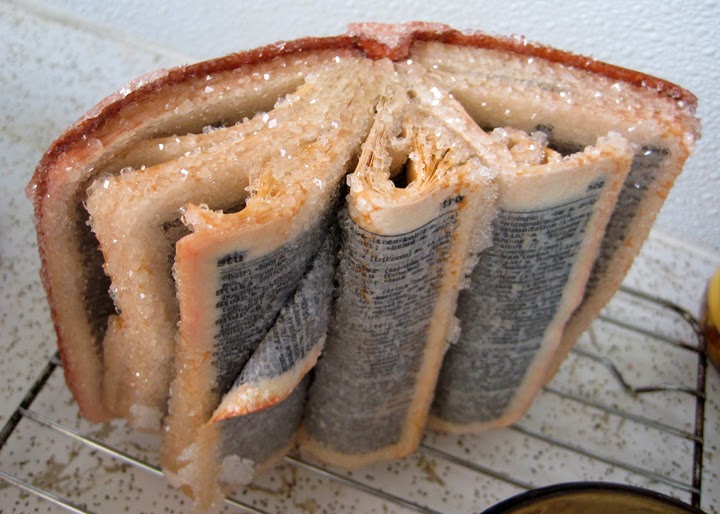 |
| Vintage photo with alum crystals |
 |
| Photo in supersaturated Borax solution |
I half expected photos to simply dissolve or to have the images become muddied when immersing them in supersaturated solutions but not so. In fact the reverse is true; crystallization seems to seal and preserve the photos, particularly the Borax crystals.
The formula again involves 3 tablespoons of 20 Mule Team Borax per cup of boiling water, stirring to dissolve and create a supersaturated solution. Immerse the photo and wait for crystals to attach. The photo here (taken circa 1973 and printed by a drugstore photo service) was immersed for about a day. It is now rigid and covered in crystals.
 |
| Self portrait: photograph encrusted with Borax crystals |
 |
| Close-up |
The next photo, taken of my mother standing in the garden in Stone Mountain, Georgia circa 1949 or so, is also a commercially printed snapshot. This photo was immersed in an alum crystal solution (1/2 cup boiling water and 2.5 tablespoons alum), which forms much larger crystals, for about 24 hours.
 |
| Frozen hope: photo encrusted with alum crystals |
 |
| Close-up |
The final experiment involves a photo circa 1910 or so, developed on an uncoated paper much thinner than the photographic paper used today. I left it in a supersaturated alum solution for a few hours. It crystallized nicely but once out of the bath and drying, the crystals began to fall off. As a result the end result shown below is a bit of a cheat. I glued crystals back on, which enabled me to strategically place them where I wanted to. However, in the close-up below you can see that hundreds of miniscule little crystals are adhering to the photo paper on their own.
 |
| A Moment in 1910: photo with alum crystals |
 |
| Close-up |
How do you frame a crystallized photo? Find an old frame, remove the glass, and glue the photo directly to the frame backing. Here, both frame and backing were wood, which worked out well aesthetically.
 |
| Framed crystallized photo |
After viewing these experiments, a friend is planning to dip one-page programs for a memorial service for her mother in a Borax crystal solution. The possibilities are endless. The "frozen memories" metaphor is fairly compelling. Have fun experimenting on your own.














































